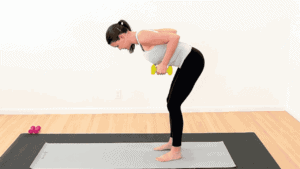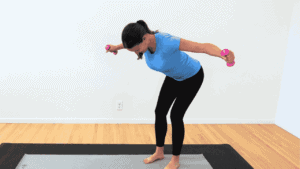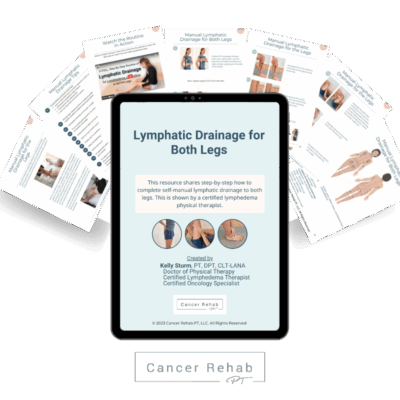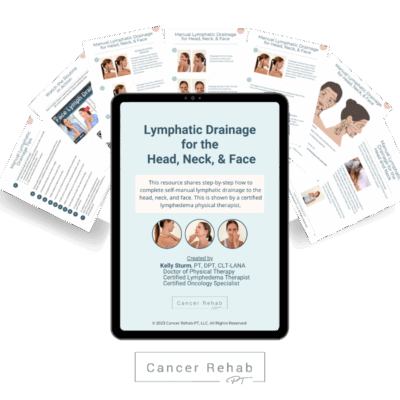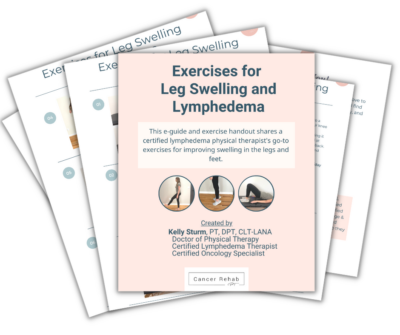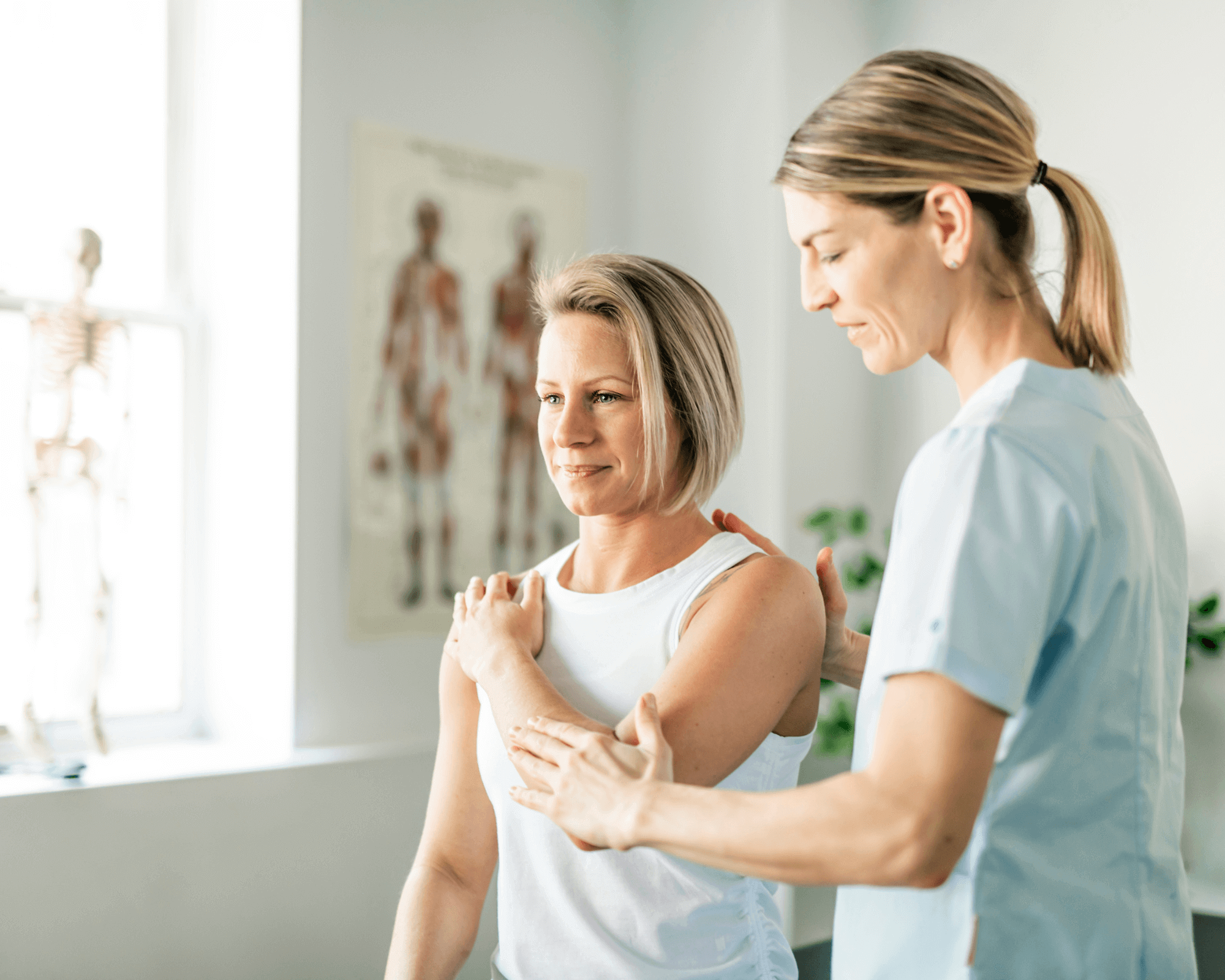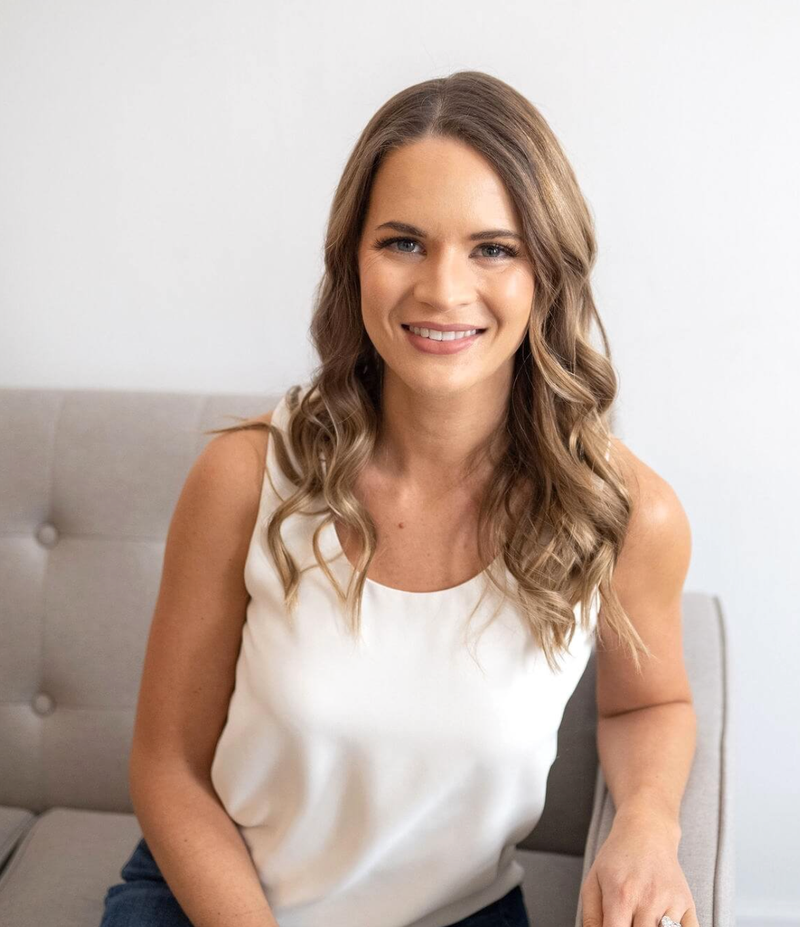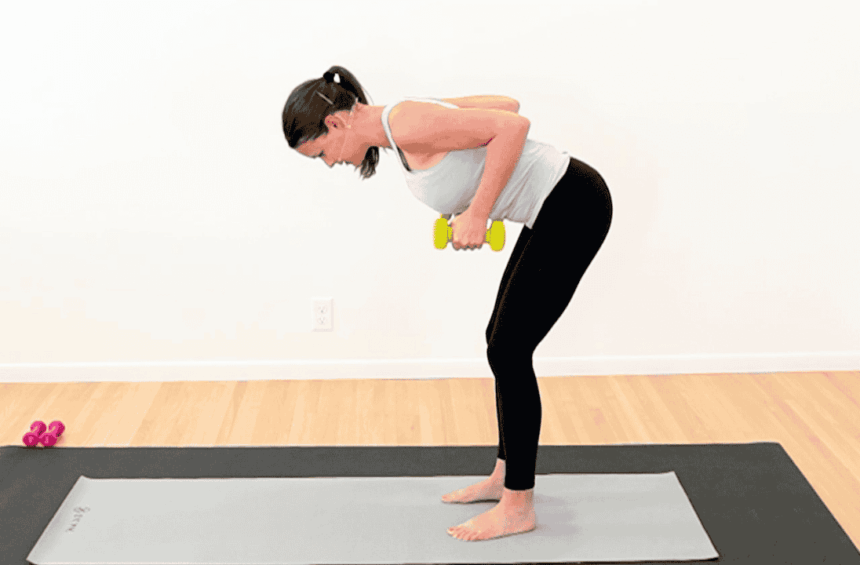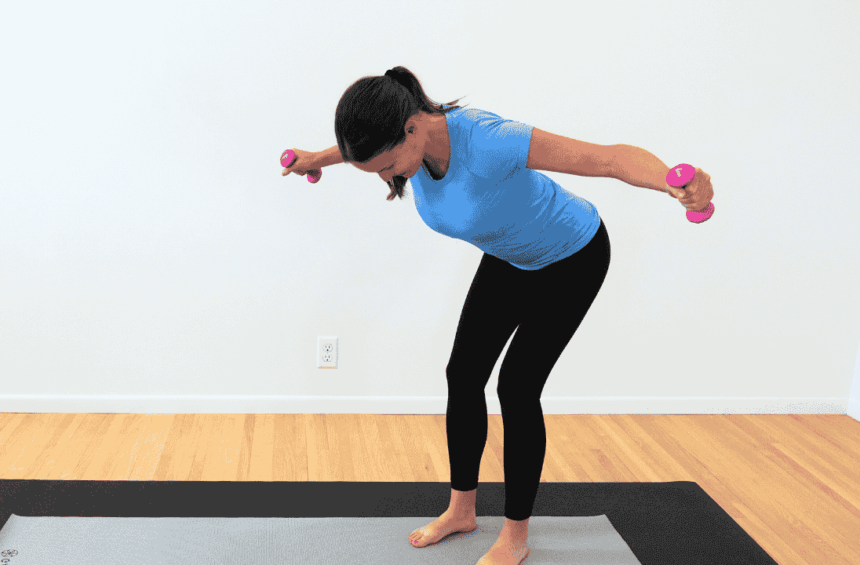Shoulder pain is a common side effect of breast cancer surgery and treatment. If you have chronic shoulder pain after breast cancer, it can adversely impact your quality of life and serve as a constant reminder of the possibility of recurrence.
Even though shoulder problems are common in breast cancer survivors, doctors and medical teams may not always address or even acknowledge them. As a result, some people experience chronic pain in their shoulders for years after breast cancer treatment and breast cancer surgery.
The fact that shoulder pain and discomfort after breast cancer are common does not make them normal.
You can take steps to manage shoulder pain, improve shoulder and arm mobility, and prevent long-term issues such as lymphedema. In this article, I’ll share some of my favorite arm and shoulder exercises for breast cancer patients.
👋 Hello, I’m Kelly Sturm, a Doctor of Physical Therapy (PT, DPT) and a Board-Certified Oncology Specialist, CLT-LANA. I share helpful resources for those living with and after breast cancer and lymphedema. Subscribe to my YouTube Channel, get my free guides, or learn more about the Healthy Shoulder Program.
Disclosure: Links included in this blog may be affiliate links. If you purchase a product or service with the links that I provide I may receive a small commission. There is no additional charge to you. Thank you for your support!
Key Takeaways
- Shoulder pain and discomfort are common side effects of breast cancer surgery and treatment that can persist for years.
- You don’t have to accept shoulder pain after breast cancer as your new normal.
- Developing a consistent exercise routine can help you alleviate shoulder pain and improve your range of motion.
Understanding Shoulder Pain After Breast Cancer Treatment
Shoulder issues after breast cancer treatment can include chronic pain, discomfort, and stiffness. You may also experience a limited range of motion, affecting your ability to lift your arm fully or perform regular daily activities.
Muscle weakness is another possible side effect, especially if you had lymph nodes removed during breast cancer surgery, which can affect the overall strength and stability of the shoulder.
In addition to the physical symptoms, chronic shoulder pain after breast cancer can also have a negative emotional impact. You may feel hopeless, confused, or overwhelmed, trying to figure out how to reduce shoulder discomfort and find information that you can trust.
The Causes of Shoulder Pain After Breast Cancer Treatment
Shoulder pain after breast cancer treatment can result from various factors associated with breast cancer surgery and other breast cancer procedures. Common causes include:
- Lymph Node Removal: Breast cancer procedures that involve the removal of lymph nodes, such as axillary lymph node dissection, can impact the surrounding tissues and contribute to shoulder pain.
- Radiation Therapy: Radiation therapy to treat cancer cells can cause changes in the tissues, leading to stiffness, inflammation, and discomfort in the shoulder area.
- Surgical Scars: The presence of surgical scars, especially in procedures like mastectomy, can contribute to pain and discomfort in the shoulder region.
- Nerve Damage: Surgical procedures may result in nerve damage, leading to pain, tingling, numbness, or weakness in the shoulder and surrounding areas.
- Muscle and Tissue Trauma: The trauma associated with breast cancer surgery and the disruption of normal tissue structures can contribute to muscle soreness and pain.
- Postoperative Immobility: The period of postoperative immobility and restricted movement during recovery can lead to stiffness and pain in the shoulder.
It’s important to note that the causes of shoulder pain after breast cancer treatment often overlap, and breast cancer patients may experience a combination of these factors.
Shoulder Pain After Breast Cancer Is Common, Not Normal
Shoulder pain after breast cancer is widespread, but it doesn’t mean that you have to accept it and learn how to live with it.
A physical therapy exercise program can be very beneficial after undergoing breast cancer treatments to help you reduce pain, improve your range of motion, and get back to doing things that you love.
In the sections below, I’m going to share eight exercises that can be helpful when dealing with shoulder and arm problems. You can find more techniques, tools, and exercises in my Healthy Shoulder Program.
7 Exercises to Improve Pain in Shoulder After Breast Cancer
1. Pec Muscle Stretch
For a visual demonstration of some of the exercises in this post, watch my YouTube video: ↓
Pec muscles are the large muscles across your chest that often get irritated and inflamed during breast cancer surgery. Gently stretching the pec muscles can help improve symptoms and alleviate the discomfort.
Lie down on your back and place your hands behind your head, having your elbows point up towards the ceiling. If this position is too much for you, ask your physical therapist for modifications. The stretch should feel light and mild, not intense.
Gently allow your elbows to fall out to the sides until you feel a mild stretch across the chest. Wherever that may be, pause and take a deep breath, allowing yourself to relax into the stretch. Hold for about five seconds, and then slowly return your elbows to the ceiling.
Repeat this movement a few times, gradually increasing the stretch but making sure it still feels light and comfortable. The goal is to work up to 10-second holds and repeat the exercise three to five times. You can do this exercise once or twice a day.
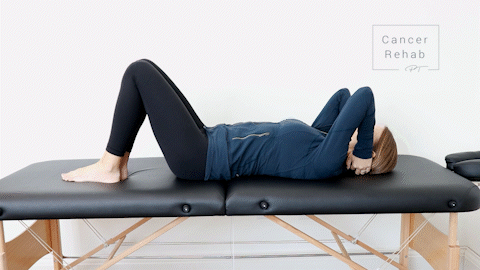
2. Pec Stretch Laying on Your Side
Laying on your opposite side, place your hand behind your head with your elbow pointing in front of you.
Slowly rotate open to try and point the top elbow to the wall behind you. Stop when you feel a mild stretch. Take a deep breath and relax further into the stretch. Hold for a few seconds, and then return to the starting position.
The goal is to work up to 10-second holds and repeat the exercise three to five times. You can do this exercise once or twice a day.
3. Lat Muscles Stretch
Lat muscles are large, flat muscles located on each side of the upper back. They can be negatively affected by certain breast cancer procedures, especially breast surgery, and can limit you from raising your arm above your head. This can make regular daily activities, such as bathing or getting something out of the cupboard, much more difficult.
Kneeling and sitting back into your heels, gently walk your hands out forward and sink your chest towards to floor. Stop when you feel a mild stretch, take a deep breath, and try to relax. Try holding the stretch for 10 seconds and repeating it three to five times. You can do this exercise once or twice a day.
If kneeling feels uncomfortable, you can do this exercise sitting in a chair at a table to address the same muscles. Sitting down, reach out across the table until you feel a mild stretch.
4. Scapular Squeezes
Scapular squeezes are one of the best arm and shoulder exercises for breast cancer patients because they help you build up strength.
Tightness in the chest after breast cancer surgery and radiation can make you pull forward into a rounded position, which disrupts shoulder alignment and can make shoulder pain worse. Scapular squeezes stabilize and strengthen your shoulder blades, which can help improve posture.
Sitting or standing, pinch your shoulder blades together, down and back. Think about squeezing down into your back pockets and opening up your chest. Try doing 10-15 repetitions and 2-3 sets. You can do this exercise once or twice a day.
5. Scapular Wall Slide
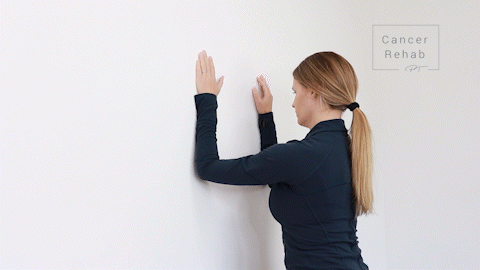
Stand at a wall or a door with your elbows and forearms touching the wall and parallel to each other. With your elbows pressed against the wall, back out until you feel your arms fully extended. It should feel like your elbows and arms are punching away from your body.
Raise your arms up the wall. Try to keep them as close to the wall as possible, but your elbows are going to come off the wall a little bit. Then, slide your arms back down the wall. Repeat this movement 10-15 times and do 2-3 sets. You can do this exercise once or twice a day.
6. Ceiling Punches
This exercise activates a muscle called the serratus anterior, which helps to control and stabilize the shoulder blade.
Laying on your back, raise your arm 90 degrees, directly towards the ceiling. Keeping your elbow straight, punch up towards the ceiling. Then relax your shoulder blade back down. Repeat this movement 10-15 times and do 2-3 sets. You can do this exercise once or twice a day.
If you want to add additional resistance, you can hold a light dumbbell.
7. Sidelying Rotator Cuff Strengthening
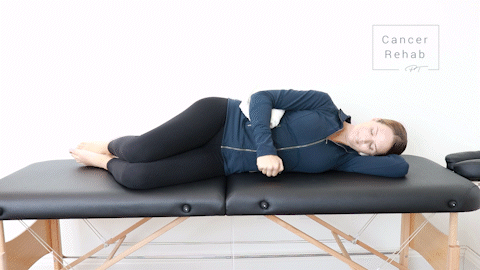
Lying on your side, place a rolled towel under your elbow.
Bend your elbow to 90 degrees with your hand near your belly or abdomen. Rotate your arm open moving your hand up towards the ceiling. Make sure to keep your elbow at your side in contact with the towel and avoid rotating your body.
Repeat this movement 10-25 times and do 2-3 sets, once or twice a day.
Final Thoughts: Shoulder Pain After Breast Cancer Treatment
It’s common to experience shoulder pain and discomfort after radiation for breast cancer or surgery. However, the fact that shoulder issues are common doesn’t mean that you have to accept them as a normal part of your life. Building a consistent exercise routine can help you minimize symptoms, improve strength, and get back to doing things that you enjoy.
If you’re looking for a resource to get started, learn more about my online Healthy Shoulder Program.

